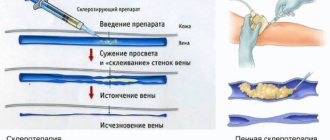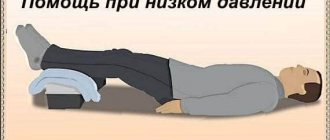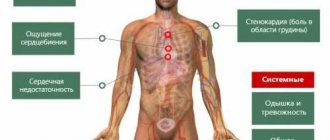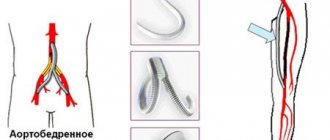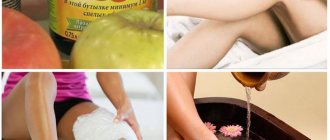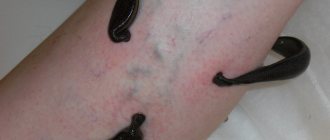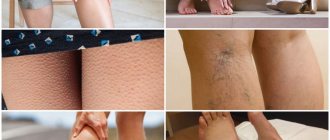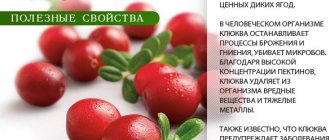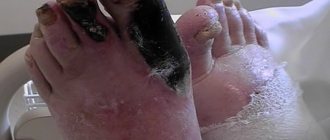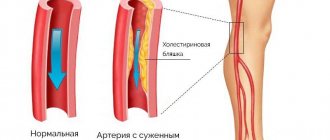Varicose veins are one of the common diseases of modern people. The symptoms, course of the disease and consequences are quite predictable. After diagnosis of varicose veins, medicine usually recommends treatment methods with surgical intervention. But there are special ways to cure this disease. Varicose veins on the legs are treated with folk remedies.
In order not to become a frequent visitor to a phlebologist’s office, it is enough for a person to take care of his health and carry out prevention of this disease.
Prevention
Due to low physical activity, wearing uncomfortable tight clothes and shoes, as well as constant stress, varicose veins of the lower extremities may develop. Measures to prevent the disease will not take much time and physical effort, so you should definitely take care of the condition of the veins.
Preventive methods are painless and accessible, and also have “folk” roots.
Basic methods of disease prevention:
- Lack of shoes that don't fit. Uncomfortable shoes are the first cause of insidious vein disease. If a woman wears shoes with heels higher than 5 cm every day, then she is guaranteed to have varicose veins in her legs at an older age.
- After a difficult day and high physical activity, it is recommended to take a “minute of rest” for your legs. You can prepare a bath from a decoction of herbs and relax. It would be a good idea to perform self-massage and rest in a lying position with your legs raised for 15 minutes.
- Do not wear tight clothing: socks, knee socks or stockings with a tight elastic band.
- Walking barefoot on sea pebbles and sand is helpful.
- Excessive consumption of salty and spicy foods in combination with alcoholic beverages leads to poor circulation and the formation of thrombotic clots. Therefore, it is necessary to get rid of bad eating habits.
- Sports activities (“bicycle”, “birch tree”, walking on tiptoes) before the appearance of painful symptoms will be an excellent preventive measure.
- If you like to sit with your legs crossed, you should get rid of this habit. This way the veins are compressed and blood flow worsens.
- Frequent hot baths and sauna visits are not good for the lower extremities. After hot water, you need to rinse them with cool water to tone the vessels.
- The best preventive measure is wearing compression garments (stockings or tights). Now doctors recommend this underwear to all pregnant women as a warning against varicose veins. Tights distribute pressure on the veins evenly and the manifestation of unpleasant symptoms decreases.
- Visiting a number of doctors: from a phlebologist to an orthopedist. A phlebologist will assess the condition of the veins, blood vessels and blood flow. An orthopedist will find out whether you have flat feet, which is also the cause of the formation of varicose veins.
Preventive measures
To prevent the disease, you need:
- maintain physical activity, take breaks for walks and stretch your legs (for sedentary work);
- maintain optimal sleep and rest patterns;
- do not cross your legs (while sitting);
- Avoid wearing high heels for long periods of time;
- avoid tight trousers (tight-fitting fabric impedes the movement of blood);
- practice walking on uneven surfaces;
- eat right: include natural foods, fresh vegetables and fruits in your diet, reduce the consumption of salt and spices, and maintain a drinking regime.
If the veins in your legs turn blue or unpleasant sensations appear, this is a serious sign of varicose veins. Timely consultation with a doctor and prescription of treatment will help prevent the development of severe consequences.
Symptoms
Symptoms of varicose veins on the lower extremities complicate the patient’s life. The “first bells” will be buzzing, heaviness and a feeling of numbness in the legs.
The acute form of varicose veins of the legs does not manifest itself immediately, but gradually increases and indicates a problem with the following symptoms:
- Feeling of “cast iron” legs, especially in the evening after a working day;
- Pain in the lower extremities, burning in the veins and a feeling of warmth;
- Swelling that appears in the evening and disappears in the morning;
- The appearance of veins on the skin of the legs (winding, swelling); “stars” of blood vessels;
- Convulsions;
- Feeling of fullness in the legs.
What are varicose veins?
Varicose veins are a disease in which the veins dilate and the valves cannot fully transport blood, which disrupts blood flow throughout the body. Initially, you can observe the appearance of small venous networks; it is from them that you can judge the onset of the development of the disease.
As soon as the veins begin to swell and become larger, the patient will begin to feel significant discomfort. Every person has fragile and delicate veins, and over time their strength can be lost. If help is absent, numerous complications may arise.
Folk recipes
Folk remedies have a number of advantages over drug treatment. The main thing is that it is cheap and has almost no side effects. However, in order to recover from varicose veins, it is necessary to use a combination of treatment methods: from the help of medications to the use of traditional medicine.
The use of folk advice will be effective in the first stage of the disease, that is, when you notice symptoms such as heaviness in the lower extremities, “venous network,” and convulsions.
In more advanced cases and acute varicose veins, medical and sometimes surgical intervention by medical personnel is required.
Traditional methods of treating varicose veins in the lower extremities:
- Baking soda. Dissolve 1 pack of baking soda in a bathtub filled to the top with water. If you need a smaller portion, then dilute 5 to 7 tablespoons of soda in 5 liters of water. The water should be hot, but not scalding. The bath should not last more than 30 minutes. If you wish, you can “bathe” only your feet, then the procedure takes no more than 15 minutes.
- Grape leaves. Stir 50 g of dried grapevine leaves in 3 liters of water, brought to boiling water. You need to leave the bath for several hours, then heat the water to an acceptable temperature. Dip your feet in water and keep them there for 15-20 minutes.
- Horse chestnut. Horse chestnut bark is mixed with chamomile (flowers) and stinging nettle. Take equal proportions, all 10 g each. Pour the resulting mixture with 3 liters of water, brought to a boil and leave for 1 hour.
Strain the finished infusion, heat it to a comfortable temperature and place your feet in the bath. The duration of the appointment is half an hour. You can carry out this procedure at least every day. After the bath, put on compression stockings (stockings or tights).
Compresses for varicose veins of the lower extremities:
- Garlic. The head of garlic must be crushed or grated on a fine vegetable grater. The ointment is prepared as follows: one part garlic is mixed with two parts butter. The mixture should be applied as a lotion to the painful area and wrapped with a bandage, and on top with a warm thing (for example, a scarf). Keep the ointment on all night. You can wash it off in the morning.
- Sour milk and wormwood. To make a compress solution, you need to combine sour milk with crushed wormwood (you can use a blender for grinding). It should turn out to be a mushy state. Apply this mixture to a gauze cloth and cover your leg with it overnight. Secure the top with any material or plaster. This event can be held 5 nights in a row. A break for several days and repeat is possible.
- Medicinal Kalanchoe (plant). Place the leaves of Kalanchoe pinnate in a 1 liter jar. The leaves should fill exactly half the container. Fill the jar to the top with 70% alcohol and leave for 14 calendar days. Place it in a dark place. It is necessary to shake the contents of the container every day. Lubricate the lower extremities, including the feet, with the tincture every night before bed.
- Apple vinegar. It is necessary to purchase apple cider vinegar (3-4%) and wipe it on areas of the skin with protruding veins in the morning and evening. Internal use is also possible. On an empty stomach in the morning and evening before dinner, you can drink 1 glass of water diluted with 2 teaspoons of apple cider vinegar.
- Apples. Finely chop 1 kg of Antonovka apples or grind in a blender. Pour the resulting mass into 1 liter of boiling water. Leave for about 2 hours, then mash into applesauce. The mass must be rubbed into the lower extremities once a day. The mixture can be stored in the refrigerator and reheated in a water bath before use.
- Blue clay. Buy blue clay and mix it with hot, but not boiling, water. Instead of water, you can use whey from milk. You should get a homogeneous thick mass reminiscent of sour cream. The affected area of the skin is covered with a layer of about 2 cm with this mass. Wrap it with a towel, and on top with a warm wool cloth. The compress can be removed after 2 hours.
- Lilac. You can make a tincture of lilac flowers as follows: pour alcohol (or vodka) into a 0.5 liter jar and add lilac flowers (50 g). Lilac can be replaced with white acacia. The solution must be infused for 14 calendar days. Then strain the solution through a strainer and use it to rub the skin affected by varicose veins. The duration of treatment is 1 month.
Benefits of treatment
The main thing is availability and lack of side effects. To get rid of varicose veins you need a complex effect. It can be medicinal and using folk remedies.
There are also other advantages:
1Reducing the inflammatory process.
2 Elimination of swelling and pain.
3Prevention of thrombosis.
4Restoration of the functioning of venous valves.
5Increasing vascular tone and strengthening the walls of veins.
Treatment of varicose veins at home is effective at the initial stage of the disease. In advanced cases, drug therapy is used; if this does not help, then surgical intervention is resorted to.
Folk remedies for swelling of the legs
Excess weight causes significant pressure on the legs. Even an extra ten kilograms will have a negative impact on the veins. The elasticity of blood vessels decreases and blood stagnates in the lower extremities, resulting in swelling.
- Horse chestnut ointment. An excellent remedy for swelling of the legs is to use horse chestnut ointment, prepared independently (the recipe is described above). Chestnut is one of the popular venotonics. Its properties help strengthen the walls of veins and reduce the level of vascular permeability. As a result, the swelling goes away. This ointment relieves pain and improves blood microcirculation. The risk of blood clots is reduced.
- Dill decoction. Dilute 1 tablespoon of dill seeds into 0.3 liters of hot boiling water. Pour the broth into a thermos and leave overnight. The infusion should be drunk 0.15 liters before breakfast and before bed. The duration of treatment is 21 calendar days. You can take a break for 3 days and, if necessary, continue taking the decoction.
- Flax seeds. Place 4 teaspoons of flax seeds in a liter jar of water. Boil for 15 minutes and place in a warm place. Leave the broth to infuse and strain through a fine strainer. Drink half a glass every 2 hours. The maximum number of appointments is 8 times a day. For comfortable consumption, you can add a couple of tablespoons of lemon or orange juice. Noticeable results will appear within 2-3 weeks.
- Bath for swelling. Pour a handful of sea salt into warm water and add a few drops of essential peppermint oil. Place your feet in the water and sit there for about 20 minutes. Then rinse your feet with cold water. A big plus will be finishing the procedure with self-massage of the feet and legs. This bath tones blood vessels and helps get rid of swelling.
- Potato compress. Grate one large potato using a fine vegetable grater. Coat your feet with this mixture and bandage it with a bandage to secure the potato “mush.” You can use a plastic bag. The compress must be kept for at least 2 hours. Safe for any category of women and men.
Folk remedies for blood thinning
To get rid of the symptoms of varicose veins of the lower extremities, it is necessary to thin the blood. With age, blood thickens and, as a result, blood flow becomes more difficult and the risk of blood clots increases. Vessels become less elastic.
Popular methods of traditional medicine in terms of blood thinning for varicose veins include:
- Taking a significant amount of water depending on the patient’s weight.
- Diet and eating certain foods. Thin the blood: weak green tea without sugar, fermented milk products, apricots, lemon, cranberries, lingonberries, raspberries, grapes, grapefruit, figs, orange juice, flaxseed oil, fatty fish (mackerel, herring), wheat germ, ginger.
Herbal tinctures:
- Ginko biloba. Pour half a liter of vodka into a jar and add 50 g of ginko biloba leaves. Apply the solution within 14 calendar days. The tincture can be taken orally, 1 teaspoon 3 times a day before eating food. The duration of treatment is a month. You can take a break for a week and repeat the course of treatment.
- Sweet clover. Pour half a liter of boiling water into a thermos and add 1 tablespoon of sweet clover herb. Leave the broth in a thermos for 2 hours, strain through a fine sieve and drink 1/3 of a glass 3 times a day. Duration of treatment – 1 calendar month.
- Chestnut (peel). Pour half a liter of vodka over the chestnut peel (50 g). Leave for 14 days, then pass through a sieve and take 30 drops orally, after diluting with water. Can be used up to several times a day before meals. The duration of treatment is 21 calendar days.
- White willow bark (contains natural asipirin). 1 tablespoon of white willow bark is poured with boiling water (1 cup). Boil the broth for 10 minutes. Leave for 1 hour and pass through a strainer. Dilute with water to the original volume. Drink 2 tablespoons before meals 3 times a day. The duration of treatment is 10 calendar days.
Diet and nutrition adjustments
You can consume juice mixtures in the morning to maintain health and nourish blood vessels. These may be the following ingredients:
- Carrots, spinach, celery (10:6:3);
- Carrots with spinach and beets (10:3:3);
- Carrots, celery stalks, spinach leaves, parsley (7:4:3:2);
- Spinach, greens with turnip root, watercress (4:2:2).
Take the juice regularly and only freshly squeezed. You need to drink at least half a liter in one day. Another analogue of a healthy drink for varicose veins is Sassi water, which is made from chopped lemon, several mint leaves, one chopped cucumber and ginger. Infuse this mixture into three liters of water, then drink throughout the day. In general, it is recommended to add citrus fruits, ginger, garlic, red currants to the diet, which will compensate for the deficiency of vitamin C and rutin.
Folk remedies
Varicose veins of the lower extremities are much more common in women than in men. But the question “how to treat varicose veins on the legs in men with folk remedies” also remains relevant. The methods of traditional treatment in this case are the same.
It is important to pay attention not to the person’s gender, but to his general history and health status, allergic reactions or a high level of sensitivity to one or another component.
After analyzing these factors, a patient with varicose veins can choose a “recipe” that is suitable for him. However, consultation with a specialist in the field of phlebology is required.

